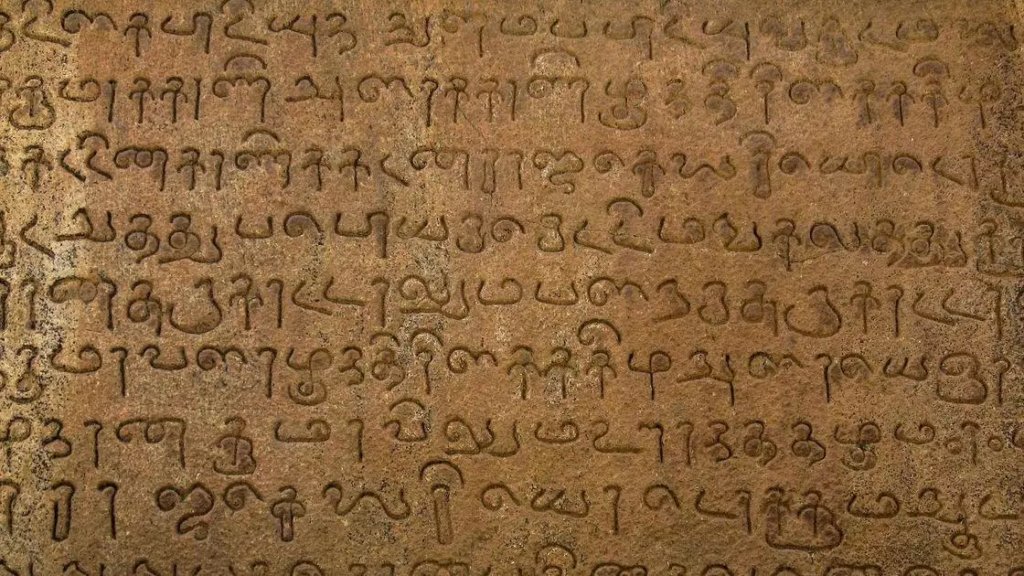Criteria for Declaring Classical Language – 4 criterias-
- High antiquity of its early texts/recorded history over a period of 1500-2000 years;
- A body of ancient literature/texts, which is considered a valuable heritage by generations of speakers;
- The literary tradition be original and not borrowed from another speech community;
- The classical language and literature being distinct from modern, there may also be a discontinuity between the classical language and its later forms or its offshoots.

The Government of India recognizes six languages as Classical Languages of India-
1.Tamil
The Tamil language belongs to the Dravidian family and is mainly spoken by the Tamil people in both India and Sri Lanka. It is also the official language of Singapore and Sri Lanka, and is an official language in India’s Tamil Nandu state and Union Territory of Puducherry. Tamil is among the 20 most spoken languages in the world and is also among the longest-surviving languages as it dates back to 500 BC. Today, there are over 60 million native speakers (5.9% of the Indian population) and another 4 million (0.4% of the population) speak it as a second language. About 1,860 newspapers are currently published in Tamil. It was declared a classical language in 2004.
2.Sanskrit
Sanskrit is a dialect of the Old Indo-Aryan language. It dates back to the 2nd millennium BC and is considered the oldest Indo-European language. Sanskrit evolved from the Vedic form currently known as Vedic Sanskrit. The language is spoken as a first language by approximately 14,100 Indians, and 1.2 million speak it as a second language, representing less than 1% of the population.Most Sanskrit speakers are found in Mattur, Odisha, Banswara, and Shimoga District. In Nepal, about 1,600 people speak it as their first language. Sanskrit was declared a classical language in 2005.
3.Kannada
Kannada is a Dravidian language spoken by about 50 million people or 5% of the Indian population as either first or alternative language. It is spoken by over 37 million people or 3.7% of the population as a first language. Kannada is a predominant language in the states of Karnataka, Andhra Pradesh, and Tamil Nandu. The history of the language dates back to 450 BC and is considered one of India’s oldest surviving languages. It was declared a classical language in 2008.
4.Telugu
Telugu is a Dravidian language and one of the official primary languages in
Indian states. It is an official language in the states of Andhra Pradesh,
Telangana, and Puducherry Territory. Telugu has the third highest number of native speakers, spoken by 74 million people or 7.9% of the population, and has a total of 84 million speakers (8.2%). The Telugu language dates back to 1500 and 1000 BC, when it split from the Proto-Dravidian language. However, early inscription dates back to between 400 and 100 BC. It was declared a classical language in 2008.
5.Malayalam
Malayalam is a Dravidian language that is mainly spoken in the Indian states of Kerala, Tamil Nadu, and Karnataka. It is among the 22 scheduled languages in India and is spoken as a first language by 34 million people (3% of the population), and is spoken as an alternative language by another 700,000 people. Its development is credited to Thunchaththu Ezhuthachan. However, the language’s origin remains a subject of dispute, as some scholars suggest it developed from Middle Tamil, while others claim it originated from Proto- Tamil-Dravidian. Malayalam was designated a classical language in 2013.
6.Odia
The Odia language is spoken by approximately 4.2% of the population of India, the majority of which live in the eastern part of the country, including the state of Odisha and West Bengal. It was the sixth language to be designated a classical language on the basis of its long literary history. The history of Odia language dates back to 10 AD and is thought to have originated from Odra Magadhi Prakrit.
Benefits of Classical Languages
Languages in India declared as classical receive three primary benefits.
First, two major international awards for scholars who have made significant contributions to Classical Indian Languages are awarded annually.
Second, the government has also set up a Center of Excellence for the Study of Classical Languages.
Third, Central Universities have also been requested to provide grants for
Professional Chairs for Classical Languages.



